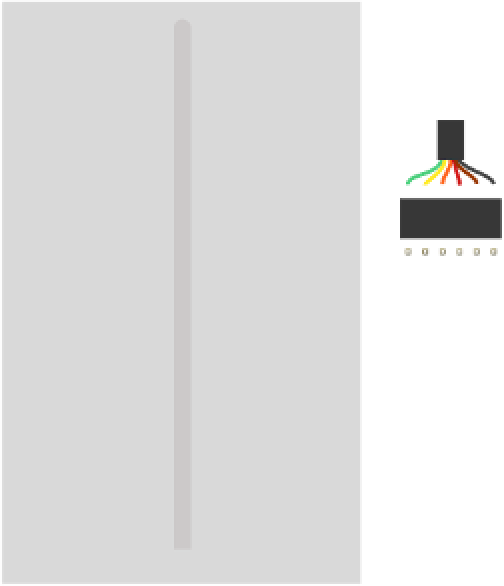Hardware Reference
In-Depth Information
Figure 2-5
The MAX3232 chip. This circuit
is really handy when you need
to get any 3.3- to 5-volt TTL
device to talk to a personal
computer with an RS-232 serial
port. This will also work for the
MAX232.
FTDI
USB-to-Serial
Cable
0.1µF
C1+
V+
Vcc
Gnd
0.1µF
T1Out
C1-
C2+
C2-
V-
T2out
R2in
R1In
0.1µF
DB-9
Serial connector
R1Out
0.1µF
5
T1In
6
RS-232 Rx
4
TTL Tx
TTL Rx
T2in
7
3
RS-232 Tx
R2out
8
9
2
1
MAX3232
scenes. For example, one of the most common problems
in getting a serial device to communicate with a personal
computer is converting the device's serial signals to USB
or RS-232. A handy chip that does the TTL-to-RS-232
conversion for you is the MAX3232, available from Maxim
Technologies (
www.maxim-ic.com
). It takes in RS-232
serial and spits out 3.3-V to 5-volt TTL serial, and vice
versa. If you power it from a 3.3V source, you get 3.3V TTL
serial output, and if you power it from 5V, you get 5V TTL
serial output. Figure 2-5 shows the typical schematic for a
MAX3232.
FTDI
USB-to-Serial
Cable
DB-9
Serial
Connector
If you've done a lot of serial projects, you may know the
MAX232, which preceded the MAX3232. In fact, the
MAX232 was so common that the name became
synonymous with all TTL-to-RS-232 converters, whether
Maxim made them or not. The MAX232 worked only at
5 volts, but the MAX 3232 works at 3.3 to 5 volts. Because
3.3 volts is beginning to replace 5 volts as a standard supply
voltage for electronic parts, it's handy to use a chip that
can do both.
X
CTS
RTS
6 DSR
GND
4 DTR
TX
RX

































































































































































































































































































